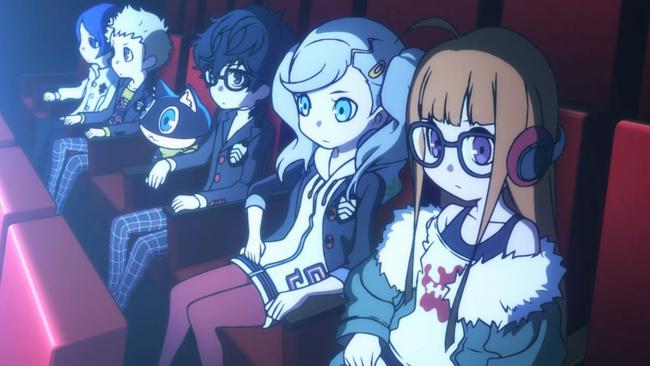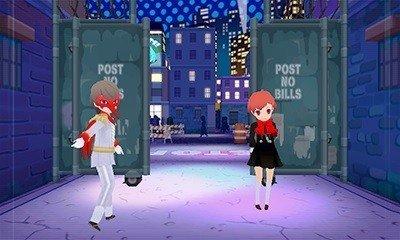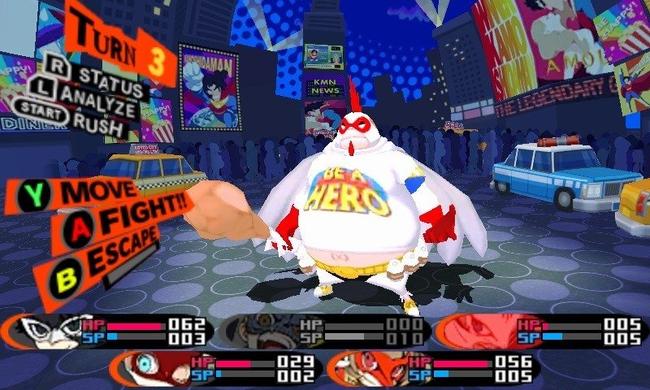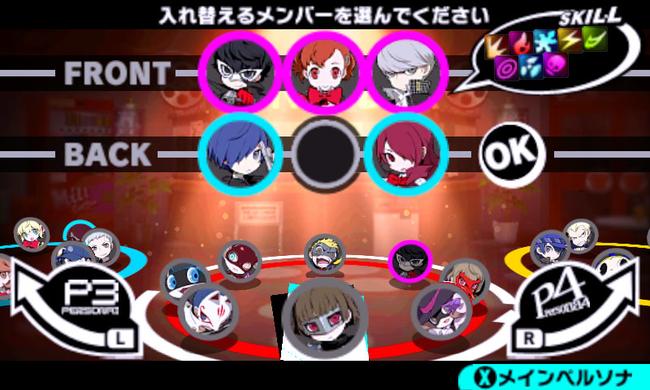Persona Q2: New Cinema Labyrinth Review
In what might be the last notable game released on the Nintendo 3DS, Persona Q2: New Cinema Labyrinth finally lands in the west. A chibi-fied crossover of three Persona casts in an Etrian Odyssey-style dungeon crawler, the game finds itself in a unique but somewhat awkward spot on Nintendo's aging handheld.
It's been nearly five years since Persona Q: Shadow of the Labyrinth released. While I was quite positive in my review of the original game, there were a few things I criticized such as awkward quest design and shallow characterizations of some of the cast members. The game was arguably also a little longer than it needed to be, stretching the amount of time players would need to spend in each dungeon area.

This time around, this side-story plot opens with the Persona 5 cast - you don't get to choose like you could in the original. During a routine trip into Mementos (which occurs at a point after the Spaceport Palace in Persona 5 when Akechi is in the group, if you want to put it on a timeline), Morgana loses control of his bus form, and the Phantom Thieves soon find themselves in a strange movie theater. There they meet two new faces, a girl named Hikari and a theater manager named Nagi. After some quick introductions, the team sets off into various movie-themed labyrinths to learn the mysteries behind their predicament.
Many components of Persona Q 2 are carried over from Persona Q, such as the round-based combat system, step-by-step exploration of labyrinthine mazes, and use of sub-personas on each party member that dictate available skills. Unlike recent mainline Persona games where only the main character can change their Persona, in Persona Q each character can equip a 'sub-persona' in addition to their main persona. This offers quite a bit more flexibility in your party, as any character's skillset can be molded based on the sub-persona they use. There are a couple of mechanical differences in this Persona Q sequel, of course, both large and small.
The most notable difference is how each game handles side-quests. The Request system found in Persona Q has now been changed to a Ticket system. Not only is the name changed to fit the movie theater theme, but the functionality is different too. In Persona Q, Requests offered a typical variety of expected subquests: asking the player to return to a dungeon to find a certain item, solve a certain puzzle, or defeat a certain enemy. You would accept quests from a menu when they became available, and you would undertake them alongside navigating through the various dungeon floors.

Tickets in PQ2 often ask for similar things, but they act independently from the usual dungeon navigation. When you accept a sidequest, the game automatically takes the player to a sectioned-off portion of a previously explored dungeon in what the game calls a Special Screening. A little mini-story plays out with a certain subset of the game's large cast, and you are either tasked with taking out certain monsters or solving a puzzle. Once you get to the end of your task, the game will then take you back to the home base, where you can then take on other Special Screenings or progress through the main storyline.
It might only sound like a slight change on paper, but it does reduce some of the tedium in taking on these sidequests and making your way through them. Now these quests act nearly independently from your dungeon-crawling, and as the game takes the player right where you need to go to begin the quest, they are simply a little easier to manage.
One common reward for completing these Special Screenings are new Unison abilities, a new addition to the game. As the name indicates, these are abilities that can activate semi-randomly during combat where certain groups of Persona users initiate a combination move to dish out some damage. They are kind of similar to All-Out-Attacks, except can activate more freely and actually show some coordinated animation between different characters. It's admittedly pretty cool to see the Persona 3 female MC team up with Mitsuru, Akihiko, and Shinjiro in a choreographed team attack.

One smaller but still significant tweak is how Skill Cards are handheld. In the first Persona Q, each sub-persona had a total of 8 skill slots: 4 for skills the persona could learn naturally, and 4 they could learn through Skill Cards. Each sub-persona also had a skill that could be extracted onto a Skill Card, which would then remove that sub-persona from your team. This Skill Card could then be used on any other sub-persona, giving them that skill into one of those 4 slots.
In Persona Q2, Skill Cards have been combined with Sacrifice Fusion, in which one sub-persona is sacrificed in order to power up another. If a to-be-sacrificed sub-persona has a transferrable skill when sacrificed, the player is given the choice to transfer the skill or not to the powered-up sub-persona. You just need a Skill Card to do this, of which the game will give you plenty. However, there are no longer skills slots dedicated to Skill Card skills, and instead each sub-persona has six ability slots in total to work with. So on one hand, it's nice that you can get both use a Skill Card and power up another sub-persona at the same time, but on the other hand, because there are no longer dedicated slots to Skill Card skills, you have to be a little more choosy in how you pick which Skills to keep.
As for the game's dungeon mazes, compared to its predecessor, Persona Q2's labyrinths are a tad smaller in size and slightly lighten up on the puzzle elements just a bit to up the pace a bit. Not dramatically so, mind, but enough to be noticeable. It's still a pretty lengthy game overall, I finished at about 60 hours completing everything including the post-game boss, but that was still about 10-15 hours shorter than my time with Shadow of the Labyrinth.
Like its predecessor, Persona Q2 has five different difficulty levels (four of which can be changed whenever mid-game), so both those who want to challenge themselves and those who'd rather enjoy a more leisurely stroll through the game can do so freely. In playing through for review, I toggled back and forth between the normal and hard modes, finding normal to be relatively easy-going in regular encounters while bosses offered a fair challenge. Harder modes will require the player to be a bit more thoughtful about their character/persona lineups on each dungeon floor.

The narrative throughline in Persona Q2 is a bit more outward than what was seen in Persona Q. The storyline centers on Hikari, who also finds herself trapped in a mysterious movie theater alongside our Persona heroes. As you progress through dungeons, you begin to learn about this character and the mysteries around the theater. The game and Hikari's story delve into themes of individuality and sense-of-self, although it's not exactly subtle about it. Still, there's enough of a hook to Hikari and the theater to provide some substance to the dungeon crawling backbone of the game.
Unfortunately, Persona Q2 still has a somewhat bad habit of relegating characters overly strongly to narrow personality quirks, so expect a lot of mentions of meat from Chie and protein from Akihiko, and so on. It's perhaps a little less egregious than its predecessor, but it still felt a little too eager to center characters on specific traits. The game has a large cast with 28 total Persona users, so I can understand why the writing felt a need to drop these sorts of things into the limited amount of dialogue each character can get, but it still feels a little too on-the-nose.
Persona Q2 is a solid entry to close out Nintendo's dual-screen handheld. It doesn't shake up any established formulas, but with a satisfying gameplay loop and charming presentation, this dungeon crawler fills that hole for those looking to get their Persona fix.